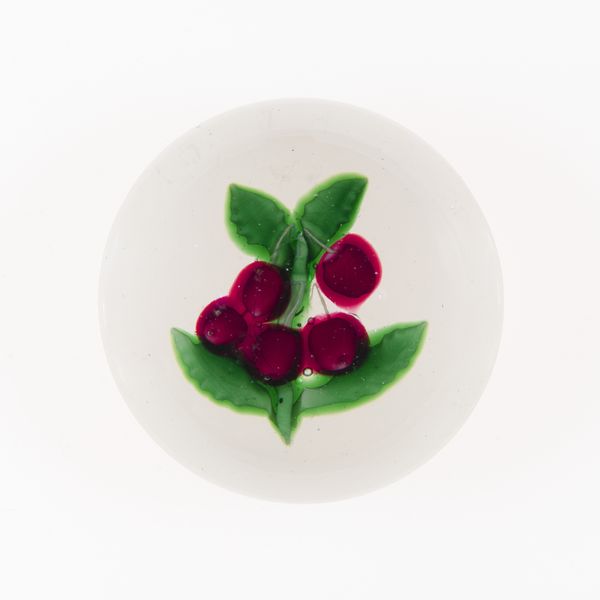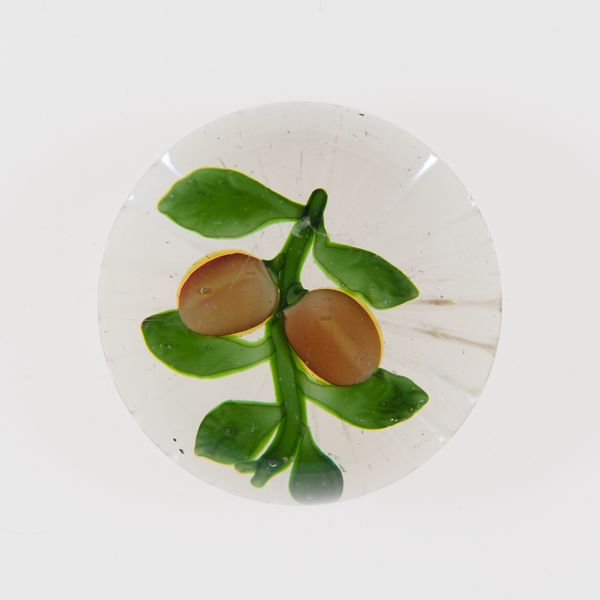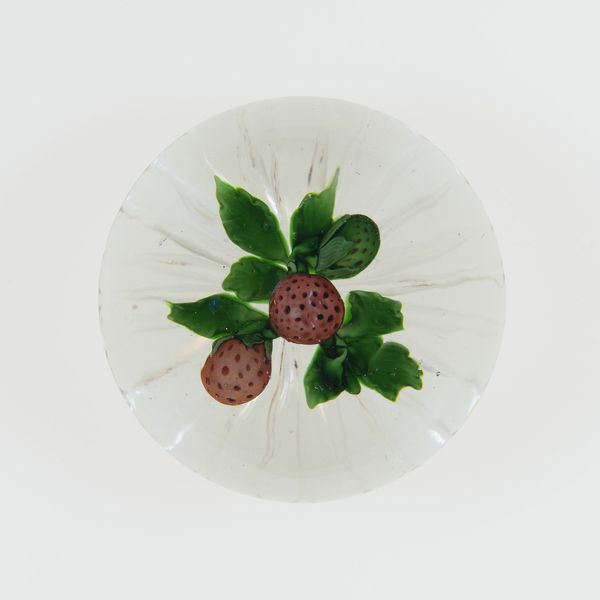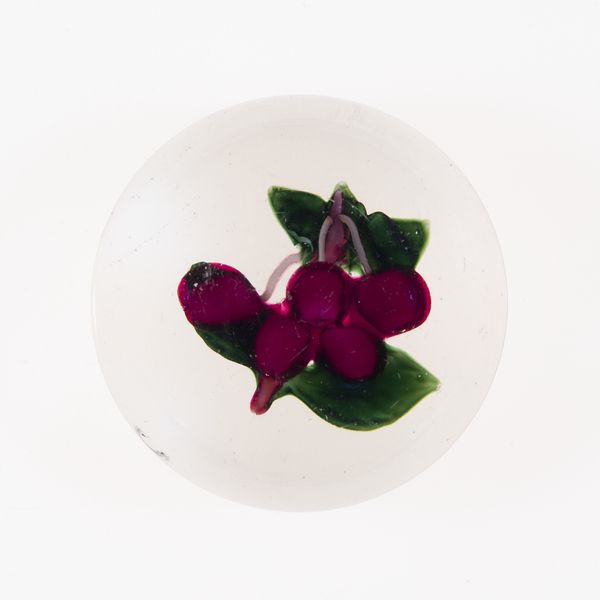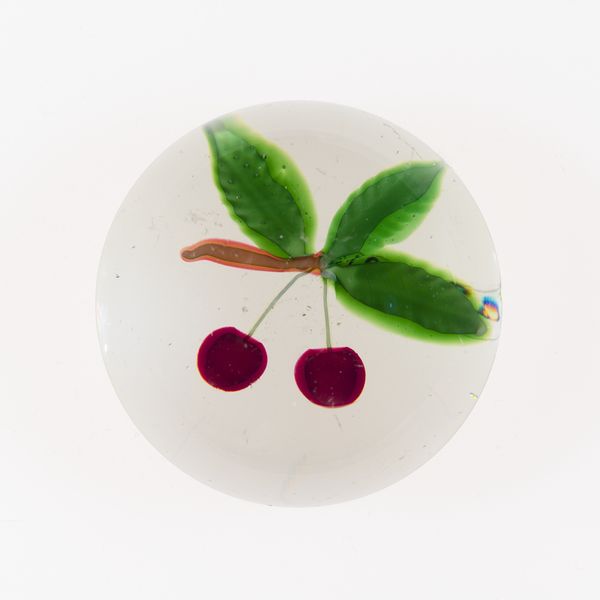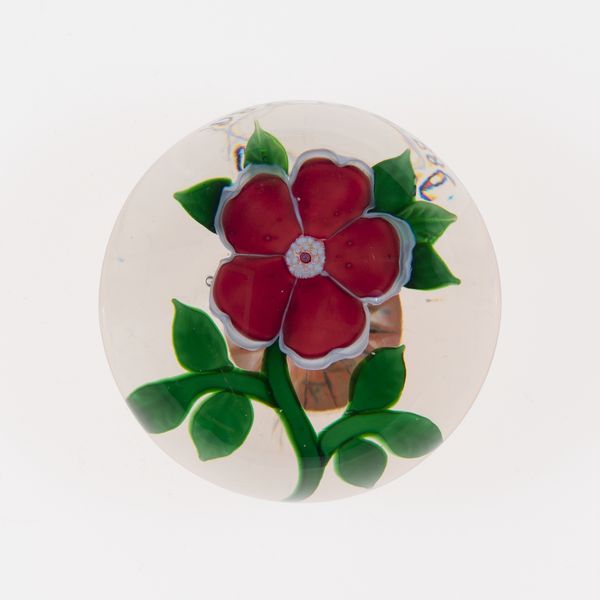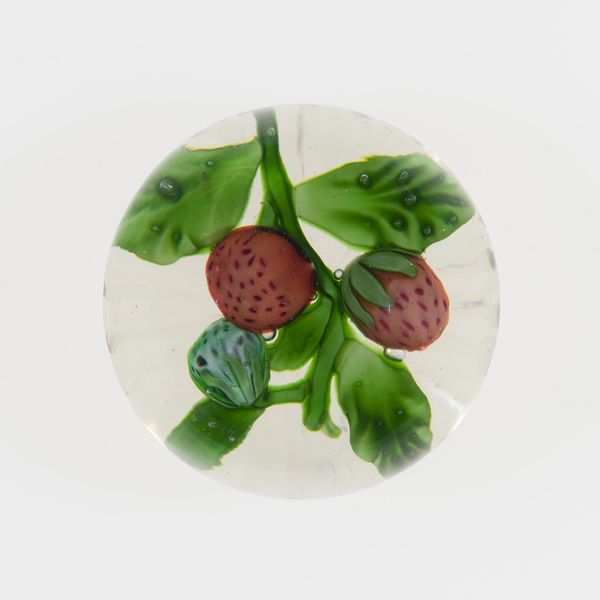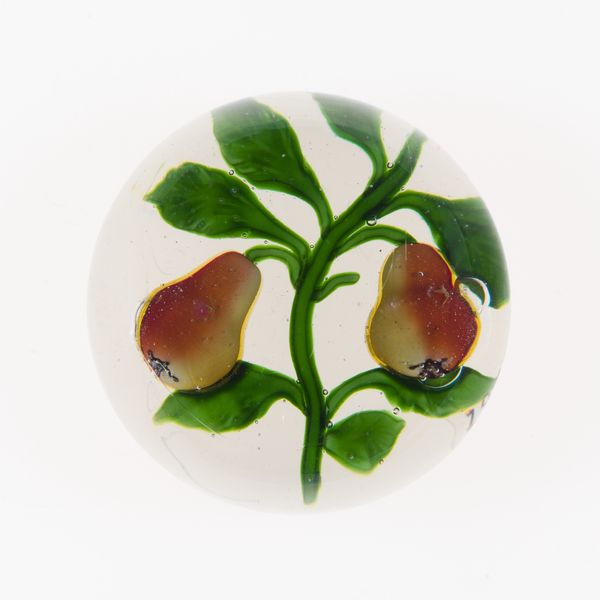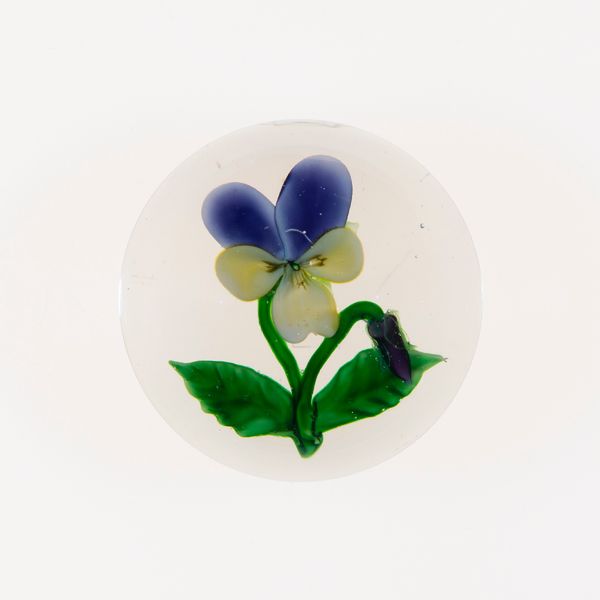
paper, glass
#
paper
#
glass
#
decorative-art
#
miniature
Dimensions: Diam. 6.2 cm (2 1/2 in.)
Copyright: Public Domain
Curator: This delightful, albeit small piece is titled "Paperweight" made around the 19th century, attributed to the Compagnie de Saint Louis. Its core composition involves both glass and paper elements. Editor: Immediately, it strikes me as a fascinating exercise in encapsulating—literally freezing a fleeting moment of organic life. The cherry motif encased feels simultaneously vibrant and strangely preserved. Curator: The aesthetic is driven by its masterful exploitation of glasswork. Look at the intentional distortion, how the convex form amplifies the details, especially those tiny air bubbles—their distribution lends an almost ethereal quality. Editor: Precisely, the production tells its own story; someone carefully layering molten glass to not only magnify the interior artwork but to protect it. One imagines this functional piece, born out of dedicated studio glassblowing, intended to be an emblem of status. Curator: Observe how the artist plays with dimensionality within a confined space. The chromatic range isn’t broad—predominantly greens and reds—but these choices bring life to the piece. The deliberate, graphic styling suggests influences of symbolism in its selection of familiar imagery. Editor: Right, glass, being a fairly challenging medium, presents significant hurdles to create such controlled results with nuanced coloration and clarity. Each cherry has incredible detail with the illusion of being translucent—you wonder what techniques they developed to manipulate molten materials with such control. Curator: It brings to light questions about the object itself and function. How much weight did visual balance and symmetry carry to those crafting paperweights during this period, and to what degree were they prioritizing aesthetic principles, such as those of the decorative-art movements? Editor: Absolutely. Perhaps the paperweight becomes a signifier—its fragility and materiality a representation of labour or the consumerist ideals gaining momentum during its making. It challenges our contemporary understanding of decorative art as pure form devoid of sociopolitical meaning. Curator: An enriching discussion, underscoring the complex relationship between functionality and formalism present in these objects. Editor: Yes, uncovering both tangible processes alongside the layered social echoes found in the piece have broadened my insight.
Comments
No comments
Be the first to comment and join the conversation on the ultimate creative platform.
